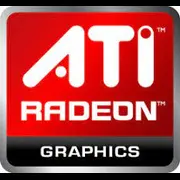ATI Radeon HD 5750

ATI Radeon HD 5750 in 2025: A Retrospective and Practical Value
Overview of an obsolete GPU for enthusiasts and minimalists
Introduction
The ATI Radeon HD 5750, released in 2009, was once considered an affordable solution for mid-range gaming. However, in 2025, its role in the tech ecosystem has changed dramatically. This article will explore whether it still holds relevance today and who might find it useful.
1. Architecture and Key Features
TeraScale 2 Architecture (Evergreen)
The HD 5750 is built on the TeraScale 2 architecture, utilizing a 40nm manufacturing process. It is the second generation of AMD's Unified Shader Architecture, featuring 720 stream processors (SP) responsible for calculations.
Features of Its Time
- DirectX 11: Support for new effects in 2010s games, such as tessellation.
- Eyefinity: Ability to connect up to three monitors—a revolution for multitasking.
- Lack of Modern Technologies: No equivalents of RTX, DLSS, or FidelityFX. Compatibility with FidelityFX (introduced in 2019) is absent.
Conclusion: The architecture is outdated, but it offered good value for money in its prime.
2. Memory: Modest Specifications for 2025
Type and Size
- GDDR5: 1 GB of memory with a 128-bit bus.
- Bandwidth: 73.6 GB/s (for comparison, GDDR6 in budget cards of 2025 offers up to 336 GB/s).
Impact on Performance
1 GB of memory is critically insufficient for modern games and applications. For instance, even basic titles like Fortnite (2025) require a minimum of 2 GB of VRAM to run on low settings.
3. Gaming Performance: A Nostalgia for the Past
Real FPS Examples (2025)
- CS2 (1080p, low settings): ~40-50 FPS (with dips during active scenes).
- GTA V (720p, minimum settings): ~30-35 FPS.
- Hogwarts Legacy (720p, minimum settings): Does not launch due to insufficient VRAM.
Resolution Support
- 1080p: Only for older games (pre-2015) or 2D applications.
- 1440p and 4K: Not feasible due to weak performance and memory.
Ray Tracing: Absent. This technology emerged a decade after the release of the HD 5750.
4. Professional Tasks: Not the Best Choice
Video Editing and 3D Modeling
- Premiere Pro/Blender: Projects can be opened, but rendering takes 5-10 times longer than on modern GPUs.
- OpenCL: Supported, but performance lags behind that of integrated graphics like the Ryzen 5 8600G (2024).
Scientific Computing
Narrow memory buses and a low number of SP render the card unsuitable for machine learning or simulations.
5. Power Consumption and Heat Generation
TDP and Recommendations
- TDP 86W: Low power consumption, even by 2025 standards.
- Cooling: Passive or low-power active coolers. Overheating may occur in poorly ventilated cases under prolonged load.
Assembly Tips
- Power Supply: A 400W PSU is sufficient (with headroom for other components).
- Case: Mini-ITX builds are possible, but at least one exhaust fan is needed.
6. Comparison with Competitors
Retro Competitors (2009-2010)
- NVIDIA GeForce GTS 450: Comparable in performance but has worse optimization for modern operating systems.
- AMD Radeon HD 5770: 10-15% faster but pricier in the secondary market.
Modern Analogues (2025)
- Intel Arc A310: 3 times faster, supports DirectX 12 Ultimate, priced at $90 (new).
- AMD Radeon RX 6400: 4 GB GDDR6, suitable for 1080p gaming, priced at $120.
7. Practical Tips
Power Supply and Compatibility
- Budget PSU: Corsair CV450 (2024) or similar will suffice.
- Platforms: Compatible with motherboards featuring PCIe 2.0/3.0. Works without issues on PCIe 4.0/5.0, but with no speed gain.
Drivers
- Official Support: Discontinued in 2015. Enthusiast communities release unofficial patches for Windows 10/11.
- Linux: Better compatibility with open-source AMDGPU drivers.
8. Pros and Cons
Pros
- Low power consumption.
- Quiet operation in office scenarios.
- Support for three monitors via DisplayPort 1.1 and HDMI 1.3.
Cons
- Insufficient VRAM for modern tasks.
- Lack of support for new APIs (DirectX 12 Ultimate, Vulkan 1.3).
- Poor gaming performance post-2015.
9. Final Conclusion: Who Should Consider the HD 5750 in 2025?
Target Audience
- Retro Game Enthusiasts: For running older titles like Half-Life 2 or Skyrim (2011) on original hardware.
- Office PCs: If multiple screen output is needed without graphical demands.
- Temporary Solution: While saving for a modern graphics card.
Why Not Recommended for New Users?
Even budget GPUs of 2025 (such as the Intel Arc A310) offer significantly better performance for $90-120. The HD 5750 is a choice for specific scenarios but not for mainstream users.
Conclusion
The ATI Radeon HD 5750 in 2025 is an artifact of its era, a reminder of how rapidly technology advances. It could be useful for niche tasks, but for most users, the choice is clear in favor of modern solutions.
Basic
Memory Specifications
Theoretical Performance
Miscellaneous
Benchmarks
Compared to Other GPU
Share in social media
Or Link To Us
<a href="https://cputronic.com/en/gpu/ati-radeon-hd-5750" target="_blank">ATI Radeon HD 5750</a>